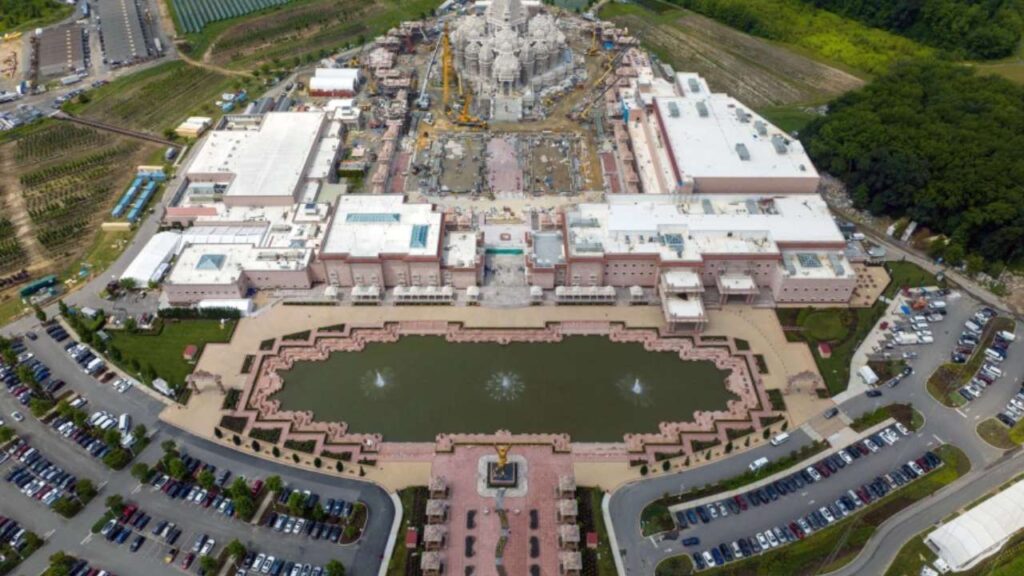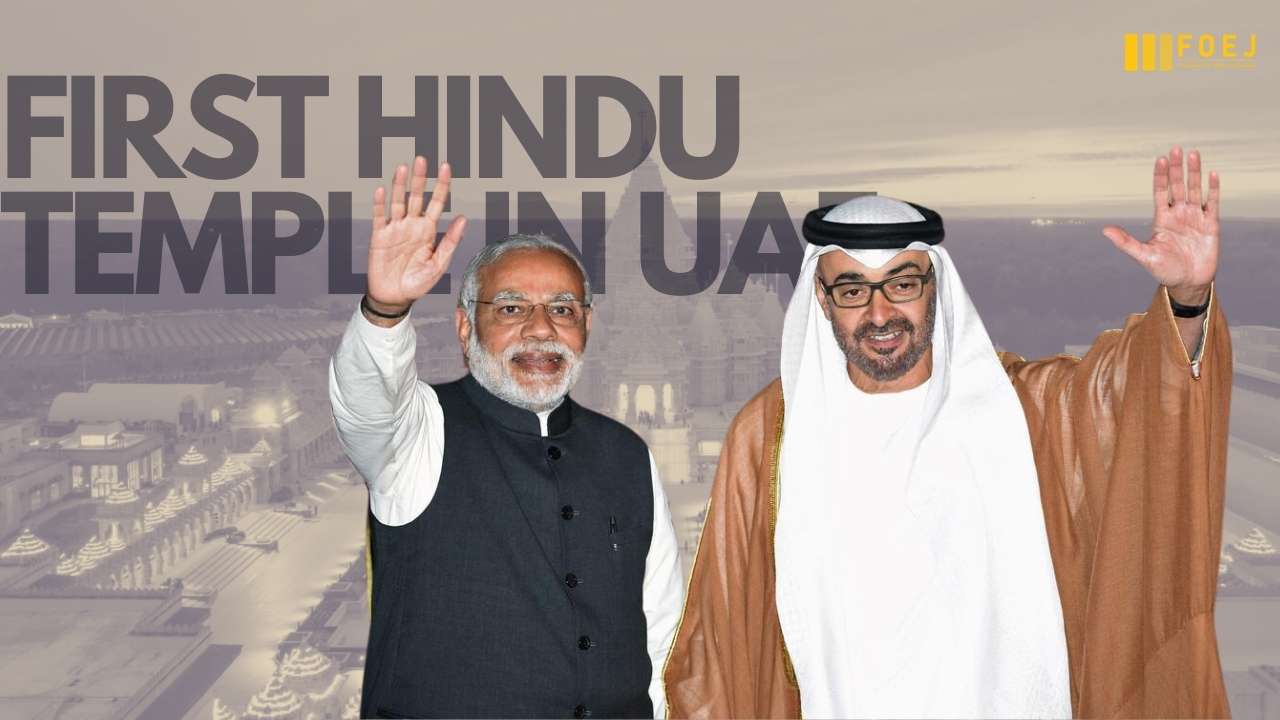During a two-day visit to the UAE, Prime Minister Modi will inaugurate the iconic BAPS Hindu Mandir, extended by Swami Ishwarcharandas and Swami Brahmaviharidas, along with the board of directors. It will be the first temple to be built in the Gulf nation. Along with the innauguration, the Prime Minister will also have a conversation about the Indian community at the event in Zayed Sports City in Abu Dhabi. It was in December that PM Modi accepted the invitation for the installation.
In January 2024, when Sheikh Mohammed Bin Zayed Al Nahyan, President of the UAE, visited India as the chief guest for the Vibrant Gujarat Global Summit, PM Modi personally received him from the airport. Yesterday, February 13, 2024, PM Modi was received by the Sheikh himself.
Who built the temple?
Bochasanwasi Akshar Purushottam Swaminarayan Sanstha (BAPS), a denomination of the Swaminarayan Sampradaya, a Vaishnav sect of Hinduism.
BAPS: It is a network of around 1,550 temples across the world.
Other constructions by Baps
- The Akshardham temples in New Delhi and Gandhinagar.
- Swaminarayan temples in London, Houston, Chicago, Atlanta, Toronto, Los Angeles, and Nairobi.
- 3,850 centers
- 17,000 weekly assemblies globally
On April 5, 1997, the tenth spiritual guru and head of the BAPS, Pramukh Swami Maharaj, put forth the idea of a Hindu temple in Abu Dhabi as an initiative to bring countries, cultures, and communities together. “In addition to this, there was the need for the local Indian community to have a significant place of worship,” the spokesperson added.
A huge percentage of India’s population, i.e., 3.3 3.3-million is inhabitated in the UAE, and 150 to 200 families are devotees to BAPS Swaminarayan. The Abu Dhabi temple is a traditional stone Hindu temple with seven shikhars.

Making of the temple
Back in 2018, PM Modi laid the foundation of the temple in Abu Dhabi. The temple complex occupies 13.5 acres out of a total of 27 acres, with 13.5 acres used for parking, which can hold about 1,400 automobiles and 50 buses. The UAE President, Sheikh Mohammed Bin Zayed Al Nahyan, gave the 13.5 acres of property as a gift in 2019.
The temple is 108 feet tall, 262 feet long, and 180 feet wide. Italian marbles are used inside, while Rajasthani pink sandstone is used on the exterior.
- Constructed in conventional Nagar fashion, the front panel of the temple features images of Hindu spiritual masters and avatars alongside stories from other cultures.
- The construction of the temple cost about Rs 700 crore. Seven hundred containers carrying 20,000 tons of marble and stones were imported.
- Two primary domes, the Dome of Harmony and the Dome of Peace, carry the earth, water, fire, air, and plant motifs on the temple’s walls as a symbol of human interaction with nature.
- One of the biggest 3D-printed walls in the United Arab Emirates, A Wall of Harmony, has a film that highlights significant construction milestones for the temple. Thirty different historical and contemporary languages have written the word “harmony.”
- The seven shikhars (spires) in the temple represent the seven Emirates of the UAE.
- Other features include a 3,000-person assembly hall, a community center, exhibition space, classrooms, and a major venue.
- At the MEP Middle East Awards in 2019, the temple won the Best Mechanical Project of the Year and the Best Interior Design Concept of the Year 2020.
- 96 bells and gaumukhsare were installed in the temple as a tribute to Pramukh Swami Maharaj’s 96 years of life. A stone carving of Pramukh Swami Maharaj is also installed on the left of the temple.
- For the comfort of the visitors to walk on even in the hot weather, nano tiles have been laid on the ground.
- The ‘Pillar of Pillars’ with around 1,400 small pillars carved into it is a sight for visitors.
- Deities featured in the temple include Lord Ram, Sita, Lakshman, and Hanuman; Lord Shiv; Parvati; Ganpati; Kartikeya; Lord Jagannath; Lord Radha-Krishna; Akshar-Purushottam Maharaj (Bhagwan Swaminarayan and Gunatitanand Swami); Tirupati Balaji; Padmavati; and Lord Ayappa.
- The ‘Holy River’ surrounds the temple, which has been brought in from Ganga and Yamun.
- Apart from 15 value tales from Indian civilization, stories from Maya civilization, Aztec civilization, Egyptian civilization, Arabic civilization, European civilization, Chinese civilization, and African civilization have been depicted.
According to BAPS, a Muslim king donated land for a Hindu mandir, where the lead architect is a Catholic Christian, the project manager is a Sikh, the foundational designer is a Buddhist, the construction company is a Parsi group, and the director comes from the Jain tradition.









